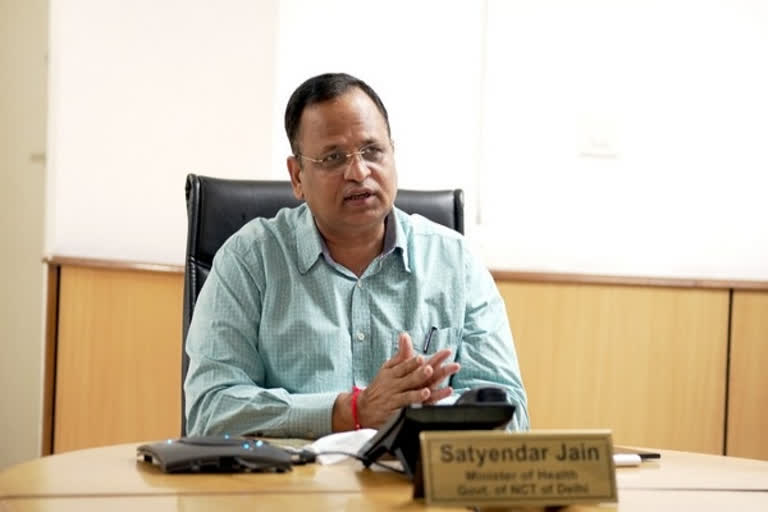New Delhi:Delhi Health Minister Satyendar Jain on Thursday informed that Delhi will opt for a lockdown if the positivity rate in the city goes up to 5 per cent to combat the likely third wave of COVID-19. Keeping in view of the likely situation, Delhi is ramping up its facilities by building over 37,000 beds in the city.
Currently, the positivity rate in Delhi is at 0.08 per cent with 61 fresh COVID-19 cases and two fatalities, as per the Delhi health bulletin yesterday. The Health Minister addressed a virtual session organised by ASSOCHAM wherein he was the chief guest. The topic for the session was Delhi Healthcare System: Preparedness to combat the third wave of COVID-19 and was attended by several senior doctors.
The distinguished panelists gave their valuable opinions on the matter and even asked the Health Minister regarding Delhi's preparation for a possible third wave of COVID-19. "All necessary measures are being taken and health infrastructure is being ramped up to unprecedented levels with more than 37,000 COVID-19 dedicated beds being built for the fight against the likely third wave of COVID-19," the Health Minister said.
Read:Delhi Metro, buses at full capacity from Monday; cinemas, theatres to open at 50%: DDMA
He also informed about the various subsidy schemes of the Delhi Government that have been launched to facilitate the building of Pressure swing adsorption (PSA) oxygen plants and liquid medical oxygen (LMO) facilities. The Minister emphasised being vigilant and following COVID-19 appropriate behavior which is crucial in tackling the spread. "We have made our public aware about what our response would be, earlier, in case the third wave strikes. If the positivity rate goes up to 5 per cent, then we will opt for an immediate lockdown without delay," Satyendar Jain said.
While addressing the questions about the second wave, he said, "We were caught off guard because of oxygen shortage and the logistical issues of procuring it. But now, over 50 oxygen plants, have already been built and more are in line so that such a problem doesn't arise again." He also shared the experiences of field hospitals or makeshift hospitals which were made during the second wave.
